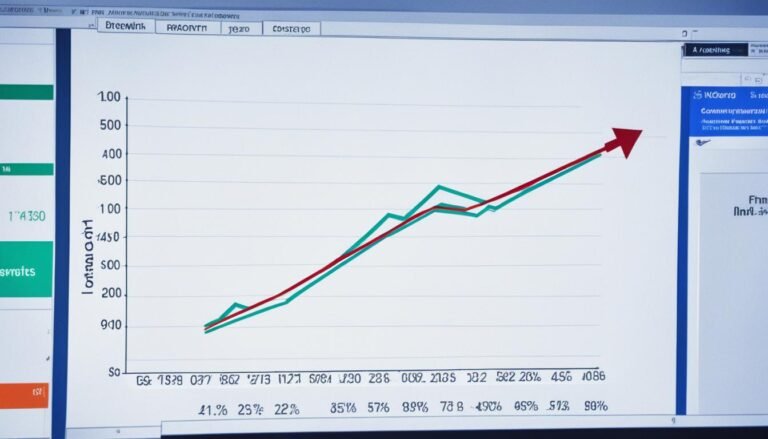Financial Technology Integrations: Innovative Approaches
In today's rapidly evolving financial landscape, the integration of technology has become a vital element in driving innovation and efficiency. From automated payment systems to AI-powered data analytics, various cutting-edge approaches are reshaping the way financial institutions operate.
With the rise of blockchain technology for enhanced security and cloud-based platforms revolutionizing accessibility, the possibilities seem limitless. But what truly sets apart the leaders in this space is their ability to provide personalized customer experiences and real-time transaction monitoring, all while ensuring regulatory compliance.
The intersection of finance and technology continues to reveal new horizons, making the exploration of these innovative approaches imperative for industry professionals.
Key Takeaways
- Blockchain enhances data security and transparency, eliminating single points of failure.
- Automated systems streamline operations, reduce errors, and optimize costs effectively.
- AI-powered analytics personalize services, improve decision-making, and boost operational efficiency.
- Real-time monitoring and compliance ensure security, detect risks, and maintain regulatory adherence.
Automated Payment Systems
In the domain of financial technology integrations, Automated Payment Systems play a pivotal role in streamlining transaction processes and enhancing operational efficiency. These systems are designed to facilitate efficient processing of payments, enabling businesses to conduct seamless transactions with their clients and partners. By automating payment workflows, companies can reduce manual errors, save time, and improve overall accuracy in financial transactions.
Automated Payment Systems offer a range of benefits, including the ability to schedule payments, set up recurring transactions, and generate detailed reports for reconciliation purposes. These systems are equipped with advanced security features to protect sensitive financial data and ensure compliance with industry regulations. Additionally, the integration of Automated Payment Systems with accounting software and other financial tools enhances the visibility of cash flow and simplifies the financial management process for organizations.
AI-Powered Data Analytics
The evolution of financial technology integrations has paved the way for AI-Powered Data Analytics to revolutionize the processing and interpretation of vast amounts of financial data. This advancement leverages predictive analytics and machine learning to extract valuable insights and streamline decision-making processes.
Here are four key aspects highlighting the impact of AI-Powered Data Analytics in the financial sector:
- Enhanced Data Processing: AI algorithms can swiftly analyze and categorize large datasets, enabling financial institutions to identify patterns and trends that were previously difficult to uncover.
- Risk Management Improvements: Predictive analytics tools powered by AI can assess potential risks by evaluating historical data and market trends, aiding in more accurate risk management strategies.
- Personalized Financial Services: Machine learning algorithms enable the customization of financial services based on individual customer behavior and preferences, enhancing customer satisfaction and loyalty.
- Operational Efficiency: AI-Powered Data Analytics automates repetitive tasks, such as data entry and reconciliation, leading to increased operational efficiency and cost savings for financial institutions.
Blockchain for Security
Blockchain technology offers a paradigm shift in security measures for financial systems, providing enhanced data protection through its cryptographic algorithms. Moreover, the immutability of transaction records on a blockchain guarantees transparency and trust within the ecosystem.
Leveraging a decentralized network structure, blockchain fortifies security by eliminating single points of failure and enhancing resilience against cyber threats.
Enhanced Data Protection
Amidst the evolving landscape of financial technology integrations, the utilization of blockchain technology has emerged as a pivotal solution for enhancing data protection measures. When considering enhanced data protection, the following key aspects come into play:
- Enhanced encryption methods: Blockchain technology offers advanced encryption techniques that bolster the security of financial data.
- Secure data storage: Utilizing blockchain guarantees that data is stored in a secure and tamper-proof manner.
- Fraud detection: The transparency of blockchain allows for efficient fraud detection mechanisms to be implemented.
- Privacy safeguards: Blockchain enables the implementation of robust privacy measures to protect sensitive financial information.
Immutable Transaction Records
In the domain of financial technology integrations, the utilization of blockchain technology for security is exemplified through the establishment of immutable transaction records. Blockchain transparency guarantees that all transactions are recorded in a way that cannot be altered, providing a secure and transparent audit trail. This feature is vital in maintaining the integrity and security of financial transactions, as it prevents unauthorized changes to the records. The table below outlines the key benefits of utilizing blockchain for creating immutable transaction records:
| Benefits of Immutable Transaction Records | Description |
|---|---|
| Enhanced Security | Protects transactions from unauthorized modifications |
| Transparency | Provides a clear audit trail of all transactions |
| Immutability | Ensures records cannot be altered after being recorded |
| Trustworthiness | Builds trust among parties due to the secure nature of records |
| Efficiency | Streamlines verification processes and reduces the risk of fraud |
Decentralized Network Security
Security in decentralized networks is a critical aspect that relies on innovative technologies to guarantee robust protection against unauthorized access and malicious activities. When it comes to leveraging blockchain technology for security, several key elements play a crucial role:
- Immutable Ledger: Blockchain guarantees that all transactions are recorded in a tamper-proof manner.
- Consensus Mechanisms: Utilizing cryptographic protocols, decentralized networks achieve agreement on the validity of transactions.
- Decentralized Validation: Nodes in the network work collectively to validate and secure transactions.
- Smart Contracts: Self-executing contracts based on blockchain technology enhance security by automating agreement enforcement.
Cloud-Based Financial Platforms
Integrating financial services with cloud-based platforms has revolutionized the way businesses manage their financial data and operations. Cloud-based financial platforms offer a scalable infrastructure that allows companies to expand or reduce their resources based on their needs, providing flexibility and cost-efficiency. The seamless integration of these platforms with existing systems enables a smooth changeover and minimizes disruptions in financial processes.
| Benefits of Cloud-Based Financial Platforms | Description |
|---|---|
| Scalable Infrastructure | Cloud platforms offer the ability to scale resources up or down based on demand, ensuring best performance and cost-effectiveness. |
| Seamless Integration | Integration with existing financial systems is streamlined, reducing implementation time and minimizing disruptions to operations. |
These platforms enhance data security, facilitate real-time collaboration, and enable automated processes, leading to increased efficiency and productivity. By leveraging cloud-based financial solutions, businesses can stay competitive in today's fast-paced digital landscape.
Robotic Process Automation
Automating repetitive tasks through the utilization of software robots has become a pivotal strategy in streamlining operational efficiency within financial technology environments. Robotic Process Automation (RPA) plays an important role in optimizing processes and enhancing overall productivity. Here are some key aspects to take into account:
- Efficiency Optimization: RPA enables the automation of time-consuming and repetitive tasks, allowing employees to focus on more strategic activities.
- Cost Reduction: By automating manual processes, organizations can greatly reduce operational costs associated with human error and labor-intensive tasks.
- Enhanced Accuracy: Software robots perform tasks with precision and consistency, minimizing errors and ensuring data integrity throughout financial processes.
- Scalability: RPA solutions can easily scale to accommodate fluctuating workloads, providing flexibility and adaptability in dynamic financial environments.
Personalized Customer Experiences
Enhancing financial technology integrations to cater to personalized customer experiences involves creating customized service offerings and tailored digital interactions.
By leveraging data analytics and artificial intelligence, financial institutions can better understand individual customer needs and preferences, ultimately providing more targeted and efficient services.
The focus is on delivering seamless, intuitive experiences that anticipate and meet the unique requirements of each client, fostering stronger relationships and increasing satisfaction.
Customized Service Offerings
In the domain of financial technology integrations, the shift towards customized service offerings is essential to providing outstanding personalized customer experiences. This approach involves tailoring technology to provide client-specific solutions and bespoke financial services.
Here are key aspects of this trend:
- Personalized Integrations: Integrate financial tools seamlessly into the client's existing systems.
- Tailored Technology Solutions: Develop custom software or applications to meet individual client needs.
- One-on-One Consultations: Provide personalized consultations to understand and address unique financial requirements.
- Dynamic Customer Profiles: Utilize data to create dynamic customer profiles for targeted and personalized services.
Tailored Digital Interactions
The evolution towards tailored digital interactions in financial technology integration signifies a strategic shift towards enhancing personalized customer experiences through advanced digital solutions. By leveraging personalized recommendations and interactive interfaces, financial institutions can create custom-tailored experiences for their clients.
Personalized recommendations utilize data analytics to offer targeted financial products and services based on individual preferences and behaviors. Interactive interfaces enable customers to engage more actively with their finances, fostering a sense of control and empowerment.
These tailored digital interactions not only improve customer satisfaction but also drive customer loyalty and retention. As financial technology continues to advance, the ability to deliver personalized experiences through digital channels will be a key differentiator for institutions looking to stay competitive in the market.
Real-Time Transaction Monitoring
Real-time transaction monitoring in financial technology systems provides instantaneous oversight of financial activities to detect and address potential risks promptly. This monitoring involves real-time fraud detection and transaction pattern analysis to guarantee the security and integrity of transactions. Here are four key components of real-time transaction monitoring:
- Continuous Data Analysis: Advanced algorithms continuously analyze transaction data in real-time, flagging any suspicious activities or deviations from normal patterns.
- Alert Notifications: Instant alerts are generated for any potentially fraudulent transactions, enabling immediate action to be taken to mitigate risks.
- Behavioral Analytics: Transaction pattern analysis helps in identifying unusual behaviors, such as large transactions at odd hours, that may indicate fraudulent activities.
- Customizable Rules Engine: A customizable rules engine allows financial institutions to set specific criteria for monitoring transactions, tailoring the system to their unique needs and risk tolerance levels.
Through these mechanisms, real-time transaction monitoring plays an essential role in enhancing security and trust in financial transactions.
Regulatory Compliance Solutions
Effective regulatory compliance solutions in financial technology systems are paramount for ensuring adherence to industry standards and legal requirements. Compliance automation plays a pivotal role in streamlining processes, reducing manual errors, and ensuring that financial institutions operate within the boundaries set by regulatory bodies.
Regulatory technology, also known as RegTech, leverages innovative tools such as artificial intelligence and machine learning to enhance compliance monitoring, reporting, and risk management.
Conclusion
To sum up, the integration of financial technology solutions such as automated payment systems, AI-powered data analytics, blockchain for security, cloud-based platforms, robotic process automation, personalized customer experiences, real-time transaction monitoring, and regulatory compliance solutions is revolutionizing the financial industry. These innovative approaches enhance efficiency, security, and customer satisfaction.
As financial institutions continue to adopt these technologies, they will stay competitive in the rapidly evolving digital landscape. Embracing these advancements is essential for staying ahead in the ever-changing financial sector.







